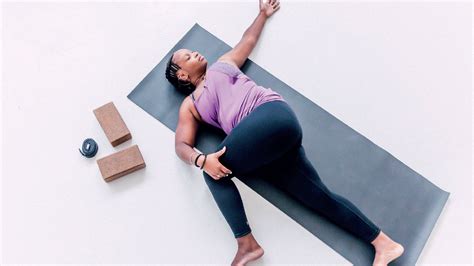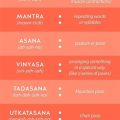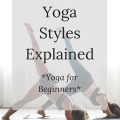Debunking Yoga Myths: Removing Misconceptions That Scare Away Beginners
Yoga, a holistic practice with ancient roots, has grown immensely popular over the last few decades. However, for many beginners, it can still seem intimidating due to the overwhelming number of myths surrounding it. These misconceptions often prevent people from even trying yoga, as they fear the practice might not be for them. In this article, we’ll break down common yoga myths, explain the truth behind them, and provide practical guidance for those looking to begin their yoga journey.
Introduction: Understanding Yoga and Its Appeal
Yoga is more than just a fitness trend—it’s a lifestyle practice that enhances both physical and mental well-being. Yet, for many newcomers, stepping into a yoga class can feel like entering an entirely foreign world. Why? Because pervasive myths and misconceptions create barriers that keep people from experiencing the benefits of yoga. In this article, we’ll explore and debunk some of the most common myths that scare away beginners, ensuring that anyone can approach yoga with confidence.
Key Concepts: What Yoga Really Is
- Yoga is not a religion – Though yoga has its roots in Hindu and Buddhist traditions, it’s not a religious practice. Instead, it’s a spiritual and physical discipline that is accessible to people of all beliefs.
- You don’t have to be flexible – Many beginners believe they must already be flexible to practice yoga, but flexibility develops over time as part of the practice.
- Yoga is more than physical exercise – While yoga includes physical postures (asanas), it also encompasses breathing techniques, meditation, and mindfulness.
- Yoga isn’t just for the young and fit – Yoga can be adapted to suit people of all ages and abilities.
Historical Context: Tracing the Origins of Modern Yoga Myths
The misconceptions surrounding yoga didn’t emerge in isolation. Many of the myths that scare beginners have roots in how yoga was introduced to the West. When yoga was first brought to Europe and the United States in the late 19th and early 20th centuries, it was often exoticized and misunderstood. Over time, this led to a distorted view of what yoga actually entails.
In the 1960s and 70s, yoga became associated with the counterculture movement, further fueling misconceptions. This era solidified yoga’s image as something mystical, unattainable, or only for certain types of people. Today, social media has amplified some of these myths, showcasing yoga poses that look impossibly difficult, which can intimidate beginners.
Current State Analysis: Common Myths That Scare Away Beginners
- Myth 1: You Have to Be Flexible to Do Yoga – Flexibility is a result, not a requirement. Beginners often worry that they aren’t flexible enough to start yoga, but yoga helps improve flexibility over time.
- Myth 2: Yoga is Only for the Fit and Young – Yoga can be tailored to suit all body types, ages, and fitness levels. There are restorative and chair yoga practices designed for those with mobility limitations.
- Myth 3: Yoga is Too Easy/Too Hard – Yoga is adaptable. There are many different types of yoga, from the slow-paced Yin Yoga to the more intense Ashtanga or Power Yoga. The key is finding the right style for you.
- Myth 4: Yoga is Just Stretching – While stretching is part of the practice, yoga involves mindfulness, breathing techniques, and meditation.
- Myth 5: You Need Expensive Equipment – Yoga requires minimal equipment. A simple mat is usually all you need to start.
- Myth 6: Men Don’t Do Yoga – Yoga is for everyone. In fact, many of the original yoga teachers were men. Today, more men are discovering yoga for its benefits in flexibility, strength, and mental focus.
- Myth 7: You Have to Follow a Strict Vegan or Vegetarian Diet – While some yoga practitioners follow plant-based diets, there is no requirement to change your eating habits to practice yoga.
- Myth 8: Yoga Is Time-Consuming – Even short yoga sessions can have benefits. You don’t need hours; a 10-20 minute daily practice can make a difference.
Practical Applications: How to Start Yoga Without Falling for the Myths
Now that we’ve debunked the myths, here’s how beginners can approach yoga:
- Start slow – Look for beginner-level classes or instructional videos. Many yoga studios and apps offer “Yoga for Beginners” sessions that are welcoming and accessible.
- Use props – Yoga blocks, straps, and bolsters can help make poses more accessible.
- Listen to your body – It’s important to remember that yoga is not about forcing yourself into poses. If a pose feels uncomfortable, modify it or skip it altogether.
- Try different styles – Experiment with different types of yoga to find the one that suits your goals and fitness level.
Case Studies: Real Stories of Beginners Overcoming Yoga Fears
| Person | Initial Concern | How They Overcame It |
|---|---|---|
| Susan (Age 45) | Thought she was too inflexible to start | Started with chair yoga, gained flexibility over six months |
| Mark (Age 38) | Assumed yoga was only for women | Joined a men’s yoga class and discovered its benefits for strength and focus |
| Alice (Age 23) | Worried yoga would be too easy | Found Power Yoga, which provided the intensity she needed |
| James (Age 60) | Believed yoga was only for young people | Started with restorative yoga, gained mobility and confidence |
Stakeholder Analysis: Who Benefits from Debunking Yoga Myths?
- Beginners – By breaking down barriers, more people can enjoy the benefits of yoga.
- Yoga Studios – Demystifying yoga can help attract a more diverse group of students.
- Health Professionals – With a clearer understanding of yoga, healthcare providers can recommend it more confidently for stress management, flexibility, and mental health.
- Society – Yoga can play a role in improving public health by promoting physical and mental well-being.
Implementation Guidelines: Steps to Encourage Yoga Beginners
- Provide beginner-friendly resources – Yoga instructors and studios should offer beginner classes and accessible videos to encourage new practitioners.
- Normalize modifications – Show that using props and modifications is an important part of practice, not a sign of failure.
- Promote inclusivity – Highlight yoga’s benefits for all body types, ages, and genders.
- Offer short, accessible sessions – Help people fit yoga into their busy schedules by promoting shorter practices.
Ethical Considerations: Ensuring Inclusivity in Yoga
One of the major ethical concerns in the yoga community is ensuring that the practice remains inclusive and welcoming to all. By addressing the myths that perpetuate exclusivity, such as the idea that yoga is only for a certain demographic, teachers and studios can create an environment that is open and safe for everyone. Ethical yoga practices should emphasize accessibility and diversity, rather than pushing a one-size-fits-all model.
Limitations and Future Research: Unpacking Further Misconceptions
- Yoga’s cultural appropriation debate – Further research is needed into how Western commercialization of yoga has impacted its traditional roots and how to practice in a respectful manner.
- Yoga for different populations – More studies could examine how yoga can be adapted for people with specific medical conditions or mobility issues.
- Understanding long-term benefits – Future research should continue to explore the long-term physical and mental health benefits of yoga, particularly for populations that might be hesitant to try it.
Expert Commentary: Voices from the Yoga Community
“The biggest misconception is that you need to be flexible to start yoga. Flexibility is something you gain through consistent practice. Yoga is for everyone, regardless of age, fitness level, or flexibility.” – Emily Turner, Certified Yoga Instructor
“Yoga is not just about physical postures. It’s about creating a balance between body and mind. You don’t need to be young or fit to benefit from yoga.” – Raj Patel, Yoga Therapist
“I’ve seen men hesitant to try yoga, but once they do, they realize it’s not just for women—it’s a challenging, rewarding practice for everyone.” – David Miller, Yoga Instructor








